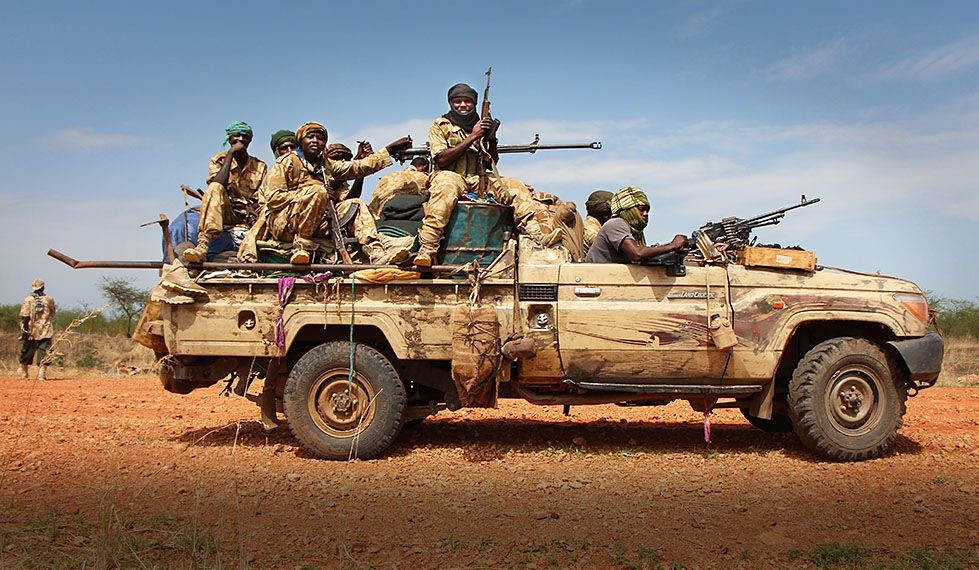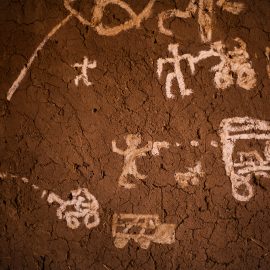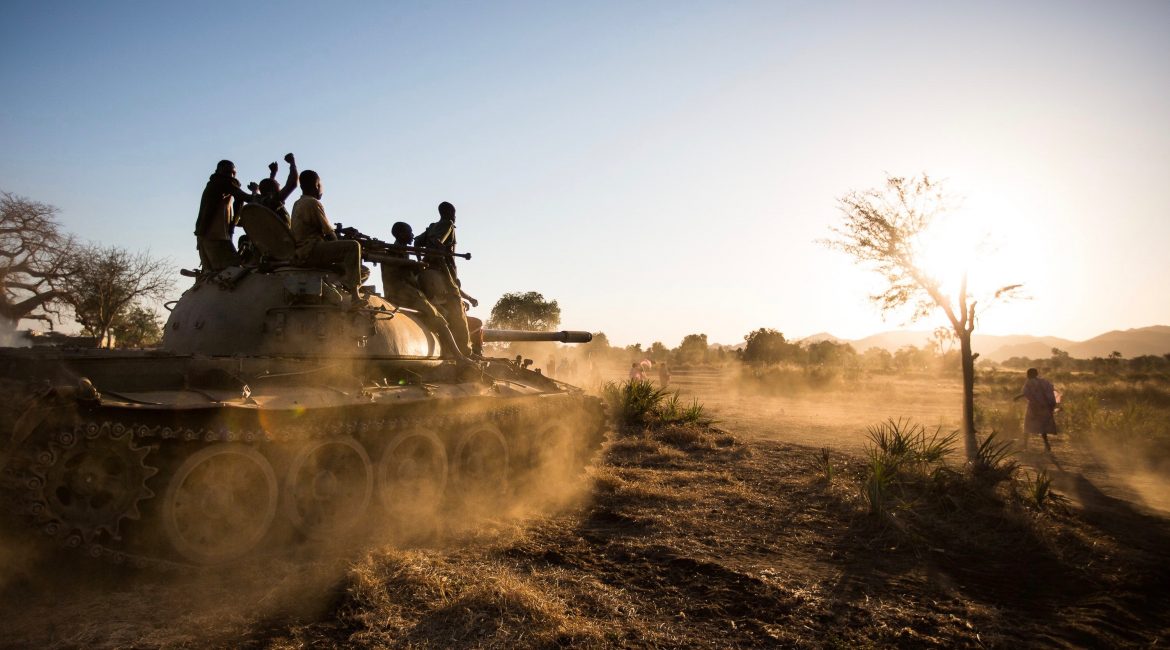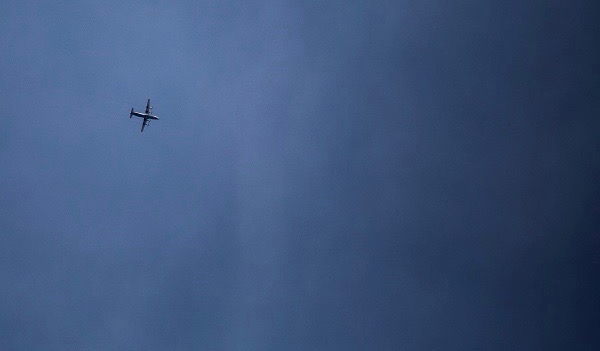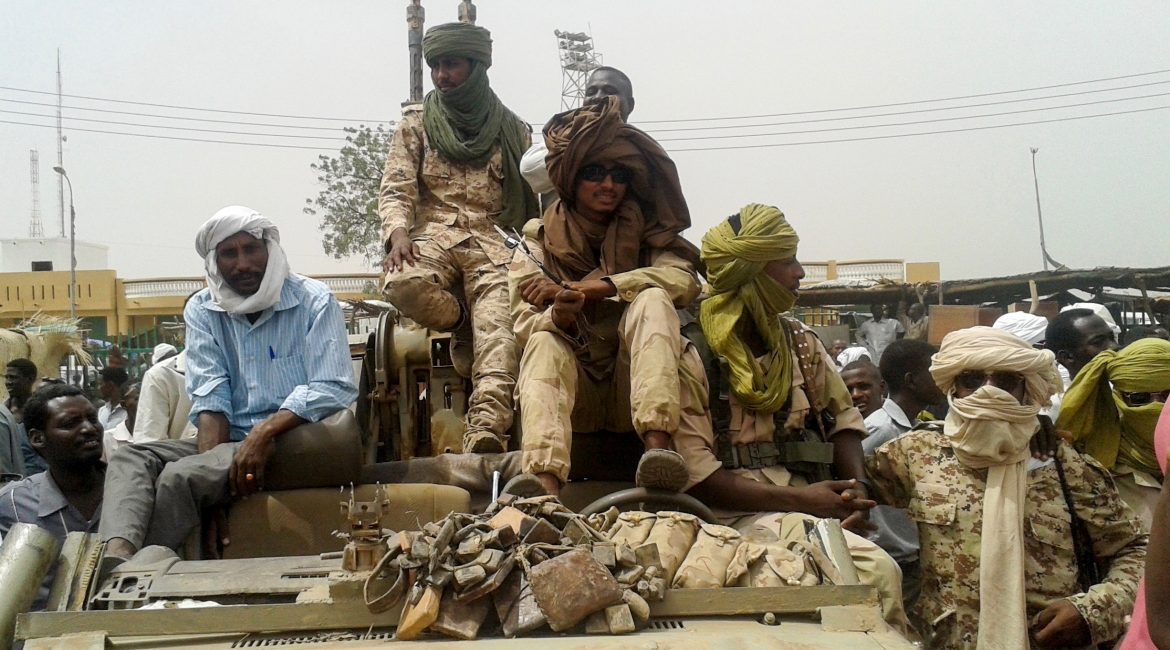Feature for TakePart.
Nation-building in rebel held territory in South Kordofan, Sudan is a lone man in a dusty car on a bumpy road smuggling chalk across the South Sudanese border to bring to the dilapidated Ministry of Education.
It is an organized health system without medicine to deliver to patients. It is a media center with the main purpose of spreading information about how to dig foxholes. It is a government tied to an army supported by a civilian population motivated to back up the militias with sticks.
In a feature for TakePart, Nuba Reports Senior Journalist Abdu Ibrahim covered the contradictions, struggles and successes of the SPLA-N government as it works to support its people in a territory that exists in a limbo of its own making. The Nuba Mountains isn’t quite trying to break away from Sudan, but right now, it is decidedly not a part of the nation. The Sudanese government has waged an indiscriminate bombing campaign on the civilians of the region while the rebel and government armies fight a seemingly unending war.
Ibrahim’s work took him across the Nuba Mountains where he spoke with heads of ministries in Kauda, the de-facto capital, and to staff at field clinics and schools. It’s an important read that acknowledges the gray areas in a war that runs red with blood and receives little nuanced coverage.
_____________________________________________________________________________________________
Full feature
The only hospital in the Nuba Mountains is also the largest building in the rebel-held territory.It would be visible to the pilots in the Russian-made Antonov bombers that sometimes fly over Mother of Mercy Hospital, stark interruptions to the sky’s usual quiet.
Down below, Dr. Tom Catena, a 51-year-old Catholic missionary from upstate New York, tends to a population of more than a million war-ravaged people. Built to hold 80, the Mother of Mercy Hospital averages more than 400 in-patients on a given day and annually treats more than 150,000. Dr. Tom, as he is affectionately known, is the only surgeon in the Nuba Mountains.
Mother of Mercy Hospital was bombed 13 times over two days in May 2014. Those healthy enough to mobilize scattered when they heard the plane, running from the building, jumping into nearby foxholes, or lying low to the ground. They screamed while they ran. The plane flew so close that Catena could see the markings on its belly.
In a recent interview with PBS NewsHour, the Sudanese ambassador to the United States, Maowia Khalid, said any bombings of civilian targets in Nuba were accidents. He blamed the inaccuracies on sanctions that force the government to use out-of-date weaponry: “We’re combating a very aggressive rebellion. And unfortunately, Sudan is using a very old technology in its armed forces, and that is due to many things, part of it the sanctions that have been applied to Sudan.”
The Nuba Mountains form little more than a sliver of land in an isolated part of southern Sudan. The rebel-held territory is sandwiched between the breakaway country of South Sudan and its former masters to the north. Most of the citizens in Nuba sided with South Sudan’s liberation army in a war that raged from 1983 to 2005, Africa’s longest-running civil war. The south was fighting for more political recognition and financial investment from the government in Khartoum, which was keeping for itself most of the financial rewards of the south’s oil. A cease-fire led to an oil-sharing agreement and a referendum in the south on secession. In 2011, South Sudan, the world’s newest nation, was born and Sudan’s 55-year run as the largest country in Africa came to a close. At the time of independence the International Monetary Fund reported that South Sudan, roughly the size of France, had about 30 miles of paved roads.
Left behind were three borderland areas: South Kordofan (home to the Nuba Mountains), Blue Nile, and Abyei. Though the people of these parts had largely sided with South Sudan, when borders were drawn designating the new country, they remained part of Sudan.
After South Sudan became independent, tensions between these peripheries and Khartoum began to mount, coming to a head in June 2011. A month before South Sudan’s secession, fighting broke out once again between the Sudan People’s Liberation Army–North (SPLA-N), made up of elements left over from the independence movement, and the government army. The SPLA-N says it is fighting for more investment in development and representation from the north, the same claims made in the civil war.
Battles rage on. The Sudanese Armed Forces are supported by former Janjaweed paramilitary troops, notorious for executing civilians, raping women, and burning villages in the Darfur region, in Sudan’s west, since 2003. (The International Criminal Court has indicted President Omar al-Bashir on charges of war crimes, including crimes against humanity, for alleged support of the Janjaweed.) These troops have been given more training and equipment over the last two years and are now known as the Rapid Support Force, officially adopted by Sudan’s security apparatus.
The coming weeks and months will see an increase in violence because battles in Nuba peak each year between October and June, the so-called fighting season, when dry ground makes for easy passage of troops and trucks and clear skies allow for more accurate aerial targeting.
Sudan’s government, said Catena, “wants us to go away. They want to kill everybody here. They want to demoralize the people. They want to treat everybody like animals.”
It is illegal to enter the Nuba Mountains. Not integrated into Sudan, and with journalists and NGOs banned, the rebel-held region is effectively cut off from the rest of the world. Smugglers carrying much-needed supplies from South Sudan bounce along dirt roads in dusty Land Cruisers for six hours from Yida, a buzzing camp of approximately 70,000 refugees who have fled war and bombardment in Nuba, bringing whatever they can—mostly medical supplies, foodstuffs, and clothing. The people of Nuba are particularly pleased when education supplies, such as chalk, are secreted across the border. Pupils commonly use stones as writing tablets, but chalk to write on them can’t be made locally.
This is what nation building looks like in this region, a place of clandestine chalk runs under threat of obliteration by bomber jets. Fueled by innovation and desperation, the people of the Nuba Mountains are trying to build a functioning government out of a nearly-ruined society. It’s all part of the struggle—the rebels who live and fight in these mountains often refer to themselves as “struggle men.”
“We have decided to struggle,” said Simon Kalo Komi, the governor of the shadow government here, “to fight against Khartoum, due to marginalization, discrimination, oppression….”
Komi’s office in Kauda, the de facto capital of rebel-held territory, looks more like a disheveled mansion than like a government building. Inside, a secretary sits at a desk with peeling wood next to overstuffed couches where men rest, chatting in Sudanese Arabic. The ceiling fans haven’t spun in years—there’s no electricity to run them.
Komi claims that people in Nuba tried to work out their issues with Khartoum and were rebuffed. “We couldn’t reach to any agreement to solve our problems peacefully,” he said. “That is why we decided to take our rights by power.”
“You can’t be afraid,” explained the governor. “But also we are encouraging ourselves and our people. If there is any ground attack, we [civilians] also work together with our forces. We will not run away. We will carry sticks. We encourage [civilians] to stand behind [the soldiers], to fight and defeat the enemy. If we have any kind of support, we will support them. Because our people are believing the vision and objectives.”
Though the government and the army in the Nuba Mountains are technically separate entities, the two are very much intertwined. The decision to simultaneously move forward with the war while forming a government providing social services has the civilian population chasing a future that may never be realized. Komi explained, “We have a political party. We have this military organ, and we have the civil administration organ. They are all going together. We are practicing democratically.”
The building that houses Jeadi, a “democratic transformation institute,” looks like a faded amphitheater. About half an hour outside Kauda, up a bumpy trail, people come here for civics training. Classes include instruction in the basics of voting, election fraud, the different levels and branches of government, and the importance of civic engagement. Lecturers explain the history of “the struggle” in Nuba and the SPLA–N’s vision for the future. The history of Sudan as presented by Jebadi instructors highlights SPLA–N’s version of the war and also covers other revolutionary movements. The Sandinistas, who in 1979 overturned an unelected right-wing government in Nicaragua, are one example.
Information campaigns pertaining to everything from personal safety to national politics are another way the opposition fights to sustain itself. Secretary of Information Jatika Dalman worked as a journalist in Khartoum for 14 years. After being detained in prison four times, he returned home to South Kordofan in 2010 to cover elections and never returned. Today he provides civilians with news about troop movements and tips on how to stay safe during a bombing raid, and he disseminates information about issues in Sudan, the SPLA–N movement, and civic responsibilities. Dalman’s office is part of a media center compound where a “Computer Training Center” has long stopped functioning. Nevertheless, Dalman says he hopes to foster independent media here.
Tijani Timma, the 61-year-old secretary of education in the self-declared government, awaits the arrival of an illegal chalk haul at his office, near Dalman’s in Kauda. Typically outfitted in a TD Bank baseball hat and wire glasses, Timma feels the lack of resources keenly. The school center where he is based is a sparse affair, the building hollowed of the noise of students and emptied of books.
Timma sees education as a key part of the SPLA-N struggle. “We are practicing democracy…from the bottom until the top,” he said. “We are preparing [students] to be ready for performing democracy tomorrow when they grow.”
That’s hard to do with school supplies running low; international donor groups here prioritize food aid and health over education. (Representatives of the organizations providing the aid said the groups needed to remain anonymous or else jeopardize their work in the region.) Nuba children still in school sit on stones under thatched roofs. Timma said teachers in villages on the region’s periphery will walk for miles—sometimes days—in 90-degree heat to take notes from one of the few outdated textbooks in Kauda and bring the scraps back to their students.
In 2010, the Nuba Mountains had 235 primary schools, with almost 70,000 students. There were six secondary schools and three teacher-training centers with almost 750 trainees. War and its subsequent depravity have damaged or destroyed about a third of the primary schools and one of the teacher-training centers. Even where facilities remain, Timma explained, fear of bombing, fighting, and distraction because of hunger keeps parents from sending their children to school. Today, only 20 percent in Nuba attend. “That means 80 percent of the children are just now sitting in their houses where they are hiding,” said Timma. Those who do make it sit for exams with rocks on their desks to hold their papers in place in case an Antonov flies over the school, and they are then forced to run for cover. In 2012, six bombs were dropped on Girls’ Peace High School. No casualties were reported.
Indications are that such incidents are not accidental: Doctors Without Borders, also known as Médecins Sans Frontières, operated a clinic in Nuba but closed it after a cluster of 13 bombs fell around the hospital compound in January. In a statement, MSF said it “directly communicated” the location of the clinic to the government. “Repeated and targeted bombings in the region prevent the safe operation of medical activities, depriving the local population of life saving care,” said the organization. The MSF building was also bombed in June 2014.
In the PBS interview Ambassador Khalid said if any attacks happened, they were in conjunction with attacks on rebel groups. “We are not targeting at all any facility for MSF,” he said, “and if any destroy happen, that’s because they’re part of rebel camps. But we’re not targeting aid workers.”
Those injured in attacks become the responsibility of Secretary of Health Mustafa Tutu Turkash. He designed and oversees a system to monitor medical delivery services and produce public health reports for Nuba’s 1.2 million people and 185 health facilities. Turkash is a big man, and he sweats profusely, staining his brown T-shirt that reads “End Nuba Genocide.”
The Secretariat of Health runs on supplies from the Nuba Relief, Rehabilitation and Development Organization, a local NGO. “As the Secretariat of Health we have our own roles we play, different from what the donors are doing,” Turkash explained. International organizations including German Emergency Doctors and the Roman Catholic Diocese of El Obeid operate illegally in the region.
Clinics can provide basic first aid assistance at best. One doctor said most of these clinics don’t have beds, medicine, or microscopes, and there are few technicians trained to read lab reports.
Turkash fears most for the region’s future, which lies in children who aren’t in school and who go without basic medical treatment. He’s especially stressed about vaccines. Measles, a disease once eradicated here, killed an unknown amount of children last spring. “Four years now, Nuba children are not receiving services, most important services, and many of them they are dying because of this,” Turkash said.
Still, the struggle goes on, and every day bombings, encroaching ground fighting, and food insecurity force more people from their homes. Some seek shelter in caves. The most desperate will make the long walk to Yida, which takes about four days. When the yearning for home becomes too great for those in Yida, some will walk or hitch rides heading north, hoping to see family. They bring with them whatever supplies they can manage, to keep the very effort of surviving progressing.
“We believe that one day the war will end,” said Governor Komi, “but we hope to end in a good way.”

